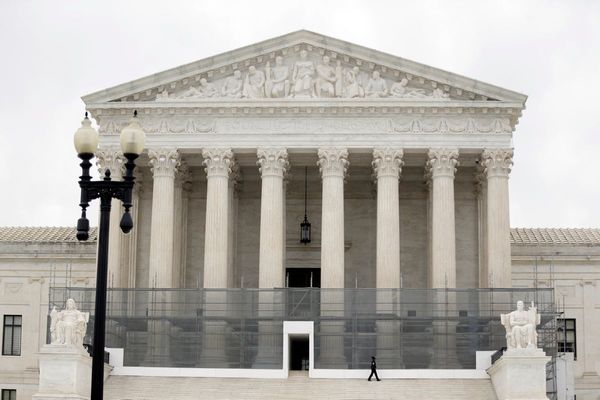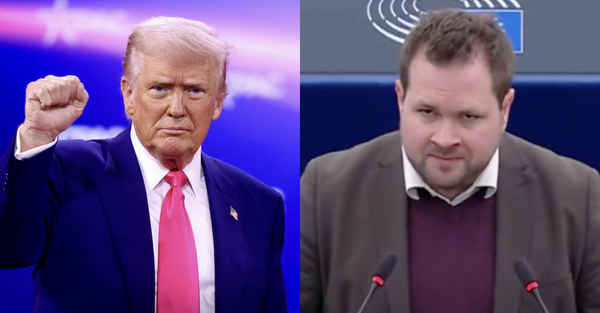
Whose fault was it?
Formula 1 officials classified the first-lap crash that destroyed the cars—and races—of Checo Perez, chaos king Kevin Magnussen, and Nico Hulkenberg as a ‘racing incident’, which to me still doesn’t quite square with what I saw on the uphill climb out of Sainte Devote. But that’s the joy of being a casual observer—it’s not my decision to make. You’ve all seen the footage and will have formed your own opinions. This is mine: I think Magnussen has been very lucky here. That the crash happened on the first lap of the race, and that his position just about merited space from Perez, may save him. Remove those two circumstances and he’s probably in trouble. Even then, I have questions. Questions like: “What were you doing there?” and “Given your extensive knowledge of Monaco, where did you think that move would end?” But that would be too simplistic a line of enquiry.
My only real question is: To what extent was this accident caused because it was Monaco, the place where no one can overtake? Every driver must have been thinking to himself, lap one is the only realistic chance to pass anyone—best have a go. Ocon clearly thought the same thing, and it didn’t end well for him either. If F1 cars have outgrown many normal circuits (see also: Imola), they outgrew Monaco in the early 70s—if they ever even properly fit it.
That first-lap crash, to some extent, was just an extension of an over-it mindset that’s rampant amongst drivers. Their frustration with Monaco has been bubbling away for years, but they are now so emboldened that in pre-race interviews, they effectively write off the Sunday race. I can’t think of another sport its athletes actively downplay the main event so intently.

Yes, overtaking has always been—and remains—more difficult on a street circuit. But when your gladiators are openly mocking the potential spectacle, you have a serious problem. Can you imagine Novak Djokovic being interviewed before Wimbledon, looking bored with life and predicting the outcome as, “Probably straight sets, no service breaks, no rallies beyond three shots, it’ll be pretty boring”? That’s exactly what Hamilton and Alonso did!
Hours after Leclerc brushed away the happy tears in his eyes and taken his victory swim, the Indy 500 played host to an absolutely wild race, with a scintillating ending that saw the lead change twice in the same number of laps. Sure, it’s comparing ovals to oranges. But this is sports. It’s meant to be entertaining. And Monaco…isn’t.
If you sense that I’m not so much mad as disappointed, you’re getting the right idea. Monaco as it stands may be a crap race, but it still, in ways romantic and sporting, represents the ultimate driving challenge in Formula 1. In its modern incarnation, the weekend is all about qualifying, and in that respect the latest session delivered. I think all F1 fans love this annual hour of spectacle because it’s the best chance to see the series' natural order upset. And I think it’s fair to say that Monaco pushes the responsibility of performance more to the driver than the machine than any other circuit.
Watching the drivers build confidence over the weekend as they start to find—and then push—the limits of the tight circuit is to witness the epitome of car control. Unless, it seems, you had the misfortune to be in a Red Bull. The downforce monster runs too low to thrive in this bumpy, kerby place, and looked like a handful. Perez dropped out in Q1, blaming traffic and the bizarre advertising stickers that kept peeling away, messing with vehicle heat management. Also a Q1 victim: Fernando Alonso, which wasn’t expected. Q2 was less controversial, but Monaco did leave us with a lovely mix of bigwigs and over-performers for Q3, with Tsunoda, Albon, and Gasly sneaking into the final session.
Leclerc was the class of the field, delivering his fastest qualifying lap when it was needed, but qualifying also offered a few more occasions for raised eyebrows. I think we all expected Norris to outqualify his teammate—and yet. Hamilton made a delightfully salty comment about his ability to out-qualify Russell for the rest of the season. But the comment of Saturday belonged to Verstappen, who gamely offered the rest of the paddock the chance to beat his time in the Red Bull. Max would become even funnier as the weekend rolled on.

Part of my disappointment is that the knife-edge driving required for Monaco qualifying doesn’t really translate on the television screen. Yes, the occasional slow-motion shot of a tyre sidewall skimming a barrier will leave viewers thinking, “Cripes, that was close.” But few viewers viscerally comprehend the minerals required to spank one of these vast 1,000-horsepower monsters around the narrow streets of an over-moneyed French-ish principality. To some degree, the failure of Monaco is a failure of the sport to translate what’s happening—in this case, superhuman levels of skill and concentration—to the audience.
Coming back to Sunday: the first corner shunt between Perez and Magnussen was a stark reminder of the energy carried by a modern Formula 1 car at 150 mph. A few corners later, Esteban Ocon confirmed that he’s a closet Motorsport reader by providing Gasly the perfect opportunity to call him a twat, as I requested after Imola. We’re still waiting for the fallout from that situation to crystallise, but even the calmest observer would now call the Alpine driver lineup unstable.
As you all know, the race was a processional, and a poor advertisement for a sport built on excitement. I can accept that this is a hard track on which to overtake, but it’s difficult to digest that excuse when we have cars and drivers that are nearly immune to being placed under pressure. Monaco 2024 was the strongest argument in favour of three pedals and manual gear changes since, well, Monaco 2023. And yes, I know that’s a silly suggestion—but like most people, I’m out of ideas as to how to improve the Monaco situation.
I am genuinely pleased for Leclerc and his curse-ending win. I am even more pleased Verstappen delivered that killer radio line about needing a pillow because—as he also later reiterated—it was all so boring. He is becoming the sometimes funny, often sage voice of common sense in the paddock. Yet even he has to bow to a comment from a man named Mike Gatt, who had a tweet posted on the BBC liveblog soon after the brief flurry of pit stops: “The driver with the fastest lap has been lapped.”
That’s Monaco for you. Confusing, infuriating, and unlikely to ever change.







